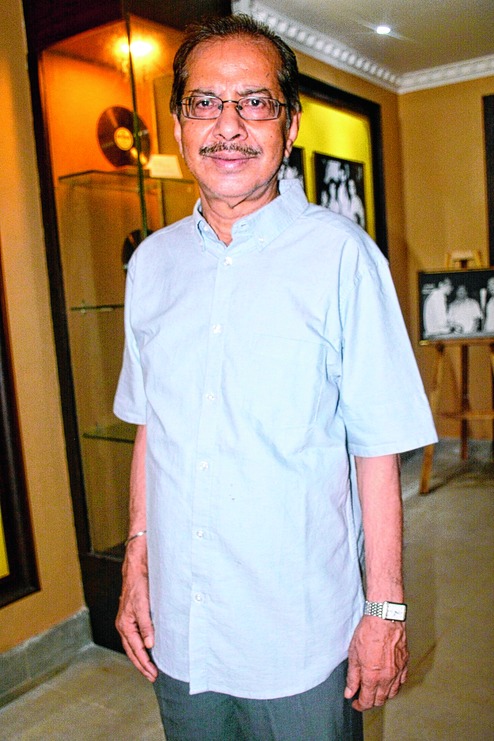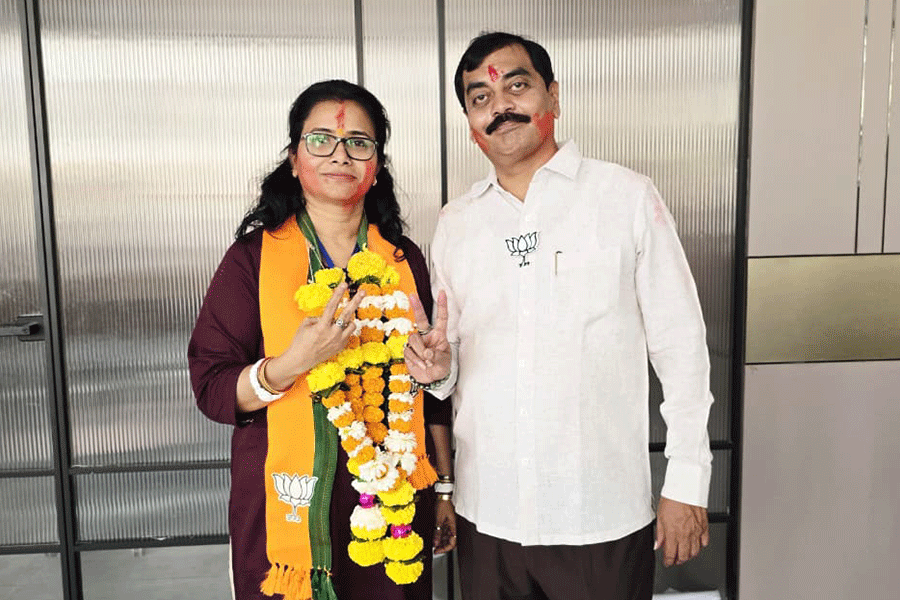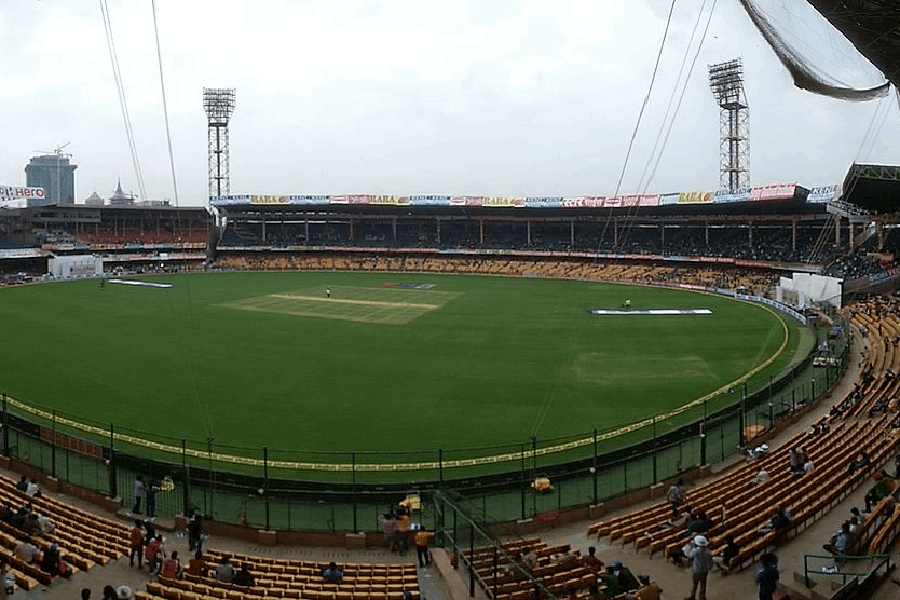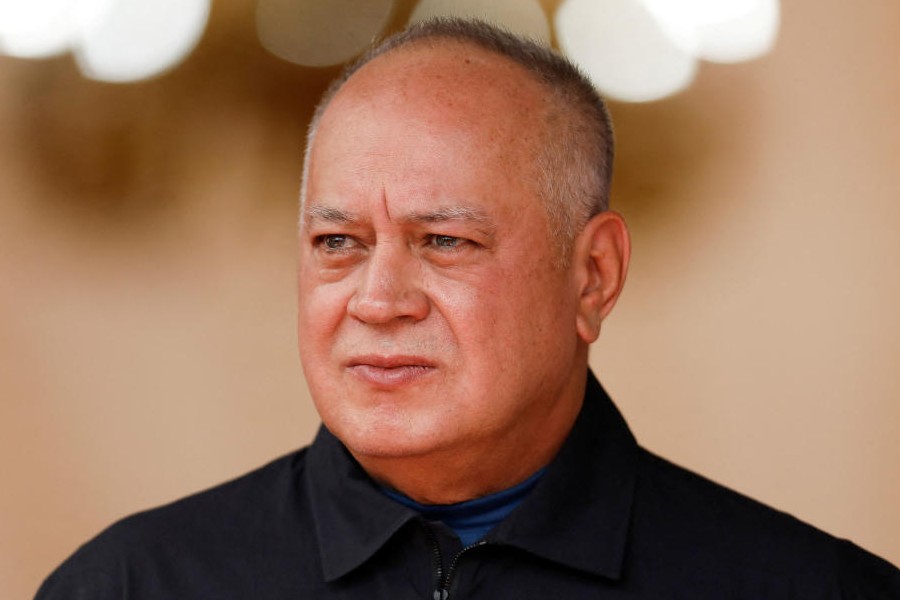
Picture by Ashwinee Pati
Charles Lamb, while writing about about his childhood, once said that he was virtually born in the wings of a stage, indicating his ancestry of theatre. I could be a little presumptuous and say almost the same thing about my lacklustre childhood. If I was beholden to one single experience of those years, it was watching the premiers of plays written by my father, occupying the front seats.
Although my father was a theatre person, both in passion and profession, he was also associated with the scripting of several Odia films. My childhood viewing of films was therefore strictly limited to them. I still sneaked out to see Na Do Gyarah, a Devanand Kalpana Kartik starrer, buying a cheap front row seat in Capital cinema in Cuttack, out of my meagre pocket money.
Since my childhood, cinema, of all art forms, had become the prima donna of my fevered imagination. It was compounded by the release of Dilip Kumar's Devdas in 1955. Although I was not allowed to see this film because of my tender age, nor I had read by then Sarat Chandra's universal masterpiece, I considered myself a genetic kin of its ethos because of my name. My mother, equally ignorant, even considered the name evangelical.
We were then living in a thatched house of uneven plastered white walls, almost a shanty, in Cuttack. The house had no electricity. It is there I built my first magic lantern to propitiate film-making in future. I darkened the inside of the lantern glass with soot and scribbled my name on that till the letters become transparent and got projected on the white walls in larger fonts.
That was fun, but I still could not make human characters and that was a pity. So I changed from lantern light to tiny sheaves of paper, designed as rectangular screens, and made it a moving storyboard. Each page, like shots, had my sketches. It was like a very crude version of Pather Panchali's shooting script.
My paper screens were dummies and my kerosine lanterns spewed smoke and not magic. It took me years to understand that magic lantern was an early form of optical projector using still pictures on a transparent plate with a source of light. Decades later I learnt to my delight that Ingmer Bergman, the well-known Swedish film-maker, a genius himself, had chosen to call his autobiography The Magic Lantern.
It is a memoir of his obsessions, commencing with his clandestine operations with magic lantern under winter blankets in Uppasala, where he was born. "When a film is not a document, it is a dream,"writes Bergman in his autobiography. "At the editing table, when I run the strip of film through, frame by frame, I still feel that dizzy sense of magic of my childhood."
Two things have changed my life irrevocably. One was reading Foyder Doestovsy's Crime and Punishment, and the other was viewing Bergman's Wild Strawberries. Doestovosky's works were available in my undergraduate days through publications of the People's Publishing House. They were printed in glossy art paper which I did not like. I read Crime and Punishment in Constance Garnett's translation published by Everyman's Library in hardcover.
The Wild Strawberries of Bergman was accessible to me decades later after considerable circumambulation. Thereby hangs a tale!
The matrix of cinema in Cuttack, my hometown, was fairly multilingual in the sixties and seventies. The Odia movies were pitiably a few, the Hindi ones were the staple of the silver screen, but with visible blend of Bengali and English. Even in Odia, there were occasional money-spinners such as Amadabata for which people came from villages in bullock carts and parked them around Prabhat cinema.
In the Cuttack of those days, there were only three functional cinemas, Capital, Prabhat and Hind. Even in Cuttack, we knew Charleston Heston, Sophia Loren, Gina Lolobridgita (and Anthony Quinn from the Hunchback of Notredam). We also knew that Dev Anand imitated Gregory Peck in his swagger. The college girls of Cuttack, many of them who knew Bengali would even read Ultorath, the Bengali film magazine, and wear their best saris to go to watch Bengali films in morning shows. The entire town had warmed up to the pairing of Uttam and Suchitra and had an uncanny feeling when the sultry Supriya arrived on the scene.
We had no access, however, to the European cinema, or what they called the avant- garde, or even the Hollywood cinema of substance, except a few Hitchcocks. We couldn't see Bergman or Antonioni, Truffaut or Kurosawa. They were the privileges Calcutta. The film festivals had started in metropolises, but Cuttack was not a part of that scene.
Fortunate amongst us was the musician Akshaya Mohanty, who would go to Calcutta for his recordings and watch some great musicals such as Can Can or The Westside Story. A great road-side raconteur, he would narrate the films almost shot-by-shot to the gaping faces at the Buxibazar pan shop. So, the Hollywood blockbusters at last came to us through the oral medium.
I did not know then that printed screen plays existed and a cinema could be read when not available for viewing. Nitai Palit was one of those film directors in Cuttack who was given to a lot of substantive reading on films. He had a copy of that odd size fat paperback Four Screen Plays by Ingmer Bergman published by Simon and Schuster. This book came to my possession through Akshaya Mohanty, who was the original borrower. It contained the screenplays of Smiles of a Summer Night, The Seventh Seal, Wild Strawberries and The Magician. I read them at once, yet waited for years for the visualisation of their dreamlike cries and whispers.
When I arrived in Cornell in 1981 for graduate study, I was amazed to find that the university film club in Uris Hall was showing a film for only $2. It was there that I achieved my initial gratification of watching foreign films in abundance. In fact in my priority list, movies ascended to the top slot, only next to my basic course work.
Bergman dealt relentlessly with the issues of human introspection and existence. The contrivance he used for this was often surreal like dreams and memories. Before watching Bergman I had a mellow feeling about November, which is the month of my birth, and a part of the glorious autumn in summer countries. Bergman with his shrouded figures and dark winter lights gave me the fear of November.
In Wild Strawberries (1957), there is the eerie dream sequence of Dr Issac Borg, in the night before his award ceremony, in which a hearse comes rolling to him carrying his own corpse, It was a cobbled street which was empty and looked crude in the cold afternoon light. The clock on the tower at the end had no hands signifying absence of time.
Similarly, in his masterpiece The Seventh Seal, (1957) , now a classic of world cinema, Bergman designs that unforgettable scene, where an itinerant count of medieval times, Antonius Block, challenges Death to a game of chess ,revealing his utter discontent with God and his silence. Bergman writes: "Is it so terribly inconceivable to comprehend God with one's own senses?"
My reminiscences of films may be long and winding, but my commitment to films, like the new year, is ever renewed. While Casablanca and Vertigo are still the toasts of my lonely nights, I am now bracing myself up to watch the just released Steven Spielberg's The Post in which Tom Hanks and Meryl Streep collaborate in a professional moxie in the journey of a newspaper, The Washington Post.
The author is a litterateur and former vice-chancellor of Ravenshaw University










